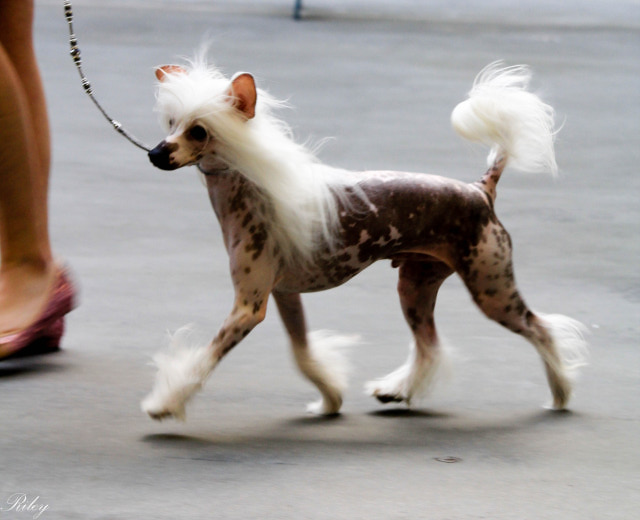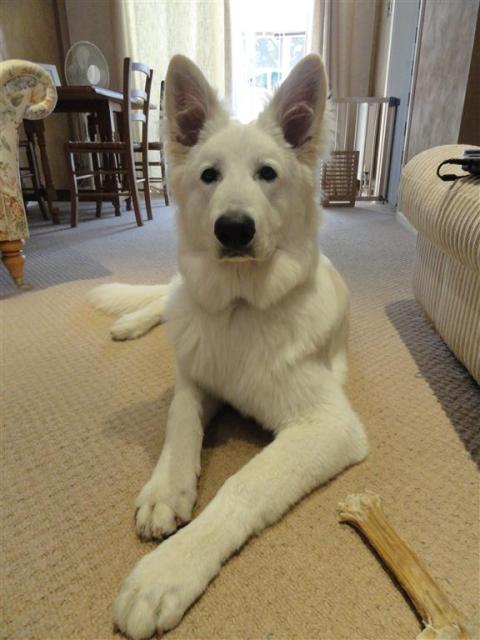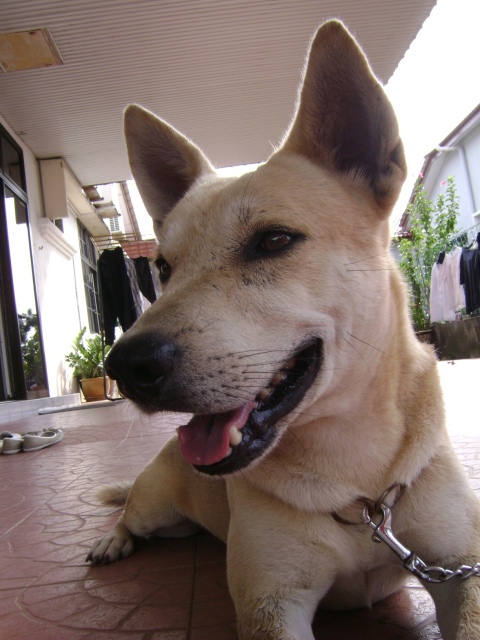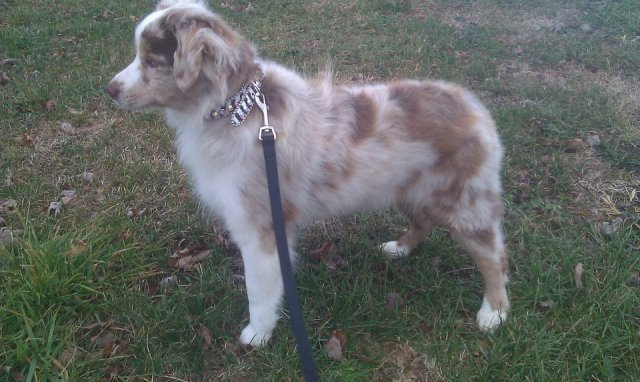Questionwe have a 8 month neutered male Australian Shepherd mix (possible a little border collie) that we got from a shelter one plus month ago. He has done well and has not been submissive(nor aggressive) around dogs or people when on walks. When I do the go sit down command the book Dog Training for Dummies says if the dog gets up one is to gently put a finger under the collar and take him back however, our dog will dribble when I do that. I can get him to go lie down no problem its just when he gets up and I lead him back (gently) he wets!. He will also dribble and wet when he gets excited so its not all submissive wetting. Example, my wife was teaching him to fetch a rolled up newspaper which he was very happy doing and she would have him sit first before throwing the paper and some of the times he would dribble in excitement before the paper was thrown. We just vinegar up the puddles and don't get after him. Should I continue the go lie down training like the Dummies book says and continue to lead him back with a finger under the collar when he gets up before he's supposed to and assume the wetting will go away in time as he gets older?
thanks
AnswerCongratulations on your new, adopted dog!
While Aussies and Border Collies are fierce herding dogs/performance dogs, they are much more sensitive to positive and negative stimulation than many may realize.
I myself own an Aussie - and he reacts "Emotional" to stimulation, especially if it's something he isn't familiar with. While he doesn't urinate, he "Fake limps" - which is a hoot, especially since other Aussie owners have told me their's would "Fake limp" too (Like when it's bath time, mine will develop a sudden 'front paw hurts - I can't possible be getting a wash now'. I usually proceed and ignore what he's doing (Should see the look on his face).
Anyway, dribbling as you call it, is part of anxieties. Anxieties can be excitement, submission, fear, trauma, etc.
Personally I wouldn't put a finger in his collar to get him to lay down or any other position.
You MUST be careful with those cookie-cutter type of books (And videos), especially since most the information given does more harm than good.
Pressure on the throat triggers a Survival Mode, for example strangulation, which tells the dog to fight for it's life. That's why many can't heel their dog properly as the dog pulls forward (Irregardless why) and the owner pulls back, the dog never experiences release on the throat and once the trigger is there, it over-rides everything.
Anyway, first of all, make sure you give ONE command. Often people say more than one thing but mean just one: "Go sit down" Is he supposed to move? To sit? To down? Alone such confusion given to a sensitive dog can trigger the pee as he's confused and stress/performance anxieties can be a plausible cause.
Say "Down" for down, "Sit" for sit and "Go" for him to .. go and fetch.
Sit: Your right hand makes a palm up, into the air motion. Like scooping air or holding something which triggers his curiosity. Dogs usually don't walk back to keep focus on the hand, so the dog will sit to see what's next. Best to exercise on a leash, leash is in your left hand and in an upward position with a guiding tension on it (Like a handler in a dog show, it's to "Guide", even if often looks like the dogs are strangled). The neck's the communication area. Even mama dog applied pressure there, or when he wrestled as a puppy with his siblings.
Simultaneous you say "Sit", bring leash straight up, hand signal.
NOW you count in your head to three. 1 - 2 - 3. IF he sat, praise. IF he didn't, you now put leash in right hand, so your left can apply pressure on his heini. Make sure you never touch the spine, never touch his hips!! Therefore never use the flat hand, palm of your hand. It will hurt/be uncomfortable and the dog will get stiff, pushing against you. It's often mistaken as refusal.
Instead use your thumb and index/middle finger and push gently and guiding into the pressure points which are found right above the hips, two little grooves, one on each side. Not only does it not hurt BUT it's such a trigger, the dog will sit and you don't have to guide him all the way down, meaning 80% of the sit is achieved all by himself.
Note: Sometimes the pressure point is right above where the tail starts - which happens often with dogs who have a docked tail.
If he gets up, quickly say "Nope" but do not repeat the command. Try to catch his body movements so he won't get the change to completely break the command and for you to have it easier and quicker to get him back into the sit. Then PRAISE!! Try not to have a high pitch voice, rather joyful, yet calm.
Down:
Teach it to him out of the sit, it's easier and helps prevent fear as this is a submission command. He'll later on do it out of any position as it's taught "Happy".
Hand signal: Hold leash now with right, close to the buckle. Left hand, palms down, does a forward motion over his head, then dropping slightly toward the ground. Say "Down" clearly, don't have a requesting voice but don't be to stern.
With right hand simultaneous guide leash forward with a slight drop to the ground. There is a bit of tension on leash, but once again, only to guide and show him what direction you'd like his body to move to: Forward and then down.
The leash NEVER pulls the dog down (That's why putting finger in collar doesn't work either) but instead your left hand will now target the pressure points on his upper back, which is located right underneath his shoulder blades. Once again, little grooves. Try to find pressure points before applying commands, like give him a nice, relaxing rub before you exercise him and find the points first!!
Apply pressure using your thumb and middle finger (You can add the index finger as his pressure points are possible a bit far apart) and wait for him to show a slight drop. Do NOT force him now. Keep fingers there, and now use right hand to adjust the leash as him dropping will give slack on the leash (Leash has to maintain the guiding tension so he knows you really mean for him to finish the exercise).
WHILE you do all the physical stuff you Pre-Praise him, encouraging him to go into the down: Good down, good, yes, yes, yes, good down, goooooood doooooooooown.
Don't stop unless he's all the way down. Don't forgot to pick up the slack with the leash (You may have to bend a bit with him now). Once he lays quietly say "Good down, good down", while placing leash underneath your left foot, securing the position and for him to keep having a connection.. like your left foot became a third arm. This will give him confidence that while in submission, you're still connected to him. I often see the dogs look at the leg/foot and then relax completely.
Stand up. Keep saying "Good down" in a calm, settle voice. That way he will learn to trust you AND, like it's done wrong so often, you don't have to be with your dog on the ground (I see people tap the floor or bend down which means you'll never archive the dog to be comfortable enough with the command to lay down while you're in a straight stand).
Again, calm, settle communication. High-pitch voices will also make a dog piddle.
I'm assuming when you guys play fetch and he brings it, you get excited and your voice raises.
That's usually the way to do but with an anxiety piddler you may just use words like "YES!!!" which won't allow your vocal cords to go high pitch.
You may also enroll him in a group class, one where he can learn to focus and do some performance, no BS commands, which will rather trigger his concentration.
DogNanny 911

 having problems with toilet training
Question
Oscar
hello
A friend of ours dog, Oscar is a 5
having problems with toilet training
Question
Oscar
hello
A friend of ours dog, Oscar is a 5
 Territory Marking
QuestionHi Kathleen and thank you in advance.
I have a
Territory Marking
QuestionHi Kathleen and thank you in advance.
I have a
 Barking at strangers
Question
Kupe
We have a 7 month old (not neutered) male
Barking at strangers
Question
Kupe
We have a 7 month old (not neutered) male
 how to train a dog?
Questiondog
QUESTION: hi,I want to ask you,how t
how to train a dog?
Questiondog
QUESTION: hi,I want to ask you,how t
 Jumping.
Question
Stetson
I have a 8 month old, male mini
Jumping.
Question
Stetson
I have a 8 month old, male mini